|
Welcome to the Xcursion Risk Tip. These tips are designed to save you time, save you money, reduce risk and improve safety for all of your programs. Today we are going to look at snow sports. Snow sports are a great way to spend a week or to spend an entire season with students developing their skills and also building those relationships and taking on an activity which is fun, engaging and something completely different. However, there are a number of risks involved in snow sports. Today we are going to just look at fitness. The level of fitness significantly impacts your students’ ability to ski or snowboard well and if students are turning up unprepared and unfit, this can lead to a much higher risk and prevalence of injury than if your students are turning up that have done some level of training and fitness leading into the activity. Even if you are going away for a week and especially if you are going away for just a week they still need to turn up fit and ready for snow sports activities. They are using muscles and sort of moves that are quite unique and quite different to what they would usually do in any other sport. So, a level of core training, strength training and flexibility is critical to help them reduce the risk of injury for any snow sports. By doing this for your staff and your students for your snow sports programs, this means that you can reduce the risk of injury so they are memorable and they are fun times at the snow for you and your entire group.
0 Comments
Schools are busy places. There’s a lot more going on these days than just a few classes each day. The significantly greater expectation of schools and parents for teachers to be doing more and more, at time makes this job quite unattractive as the hours which end up going into the job start to feel incompatible with the goal and educational aim of the role.
Due to the often inexplicably high workload, many new teachers are leaving the profession quite early, within the first two years, as the expectations and sheer volume of work which extends beyond the classroom continues to increase. Added to this, with a world that’s filled with noise and distraction and constant competing demands for our attention, it’s hard to find the space and air to breathe to put all of this in perspective. I’ve often wondered, why with improvements in technology are people’s lives and especially teachers’ lives having less and less time? Are they really engaged in beneficial work? Or are they engaged in busywork as a substitute for any real productivity? If you look at some aspects of a teacher’s job these days, some parents are expecting teachers to be doing parenting for them. Whilst this is not always the case, there’s enough under-parenting going around that the time it takes for a teacher to provide support and care for students is ever increasing. Even if it’s just a few students, each problem takes time and energy to work through and provide support. I think it’s important that schools provide a caring atmosphere, but there needs to be a clear line where parents should be taking a level of responsibility themselves and not relying on teachers to do it all for them. Again, this is one more job on top of classroom teaching, which is a core business. Then there’s all the co-curricular activities. Schools are finally realising that experiential education is a great way of learning and having a wide range of experiences and opportunities is really importing in life. However, instead of thoughtfully building this into the school program, it’s just added on top of what’s already a significant workload. It would be far better to integrate co-curricular programs into mainstream education, rather than putting them on top of other things. They’re really important ways of learning and probably more enjoyable than most classroom lessons, so why not build them into the day and not just add them on top? Then there’s the emails. Whilst a really convenient way of communicating, I have no idea why parents need to be emailing teachers. If there’s a problem, then a student should go and talk with the teacher themselves. Whenever I’ve had emails from parents, I tend to view the majority of them as pointless and something that their child could and should be addressing themselves. Yet teachers are now accessible all the time and with blurred or non-existent work boundaries, this can mean that teachers spend far more time at work and doing unproductive ‘stuff’ rather than focusing on what’s important. As a result, the standard of teaching drops as you can’t be everything to everyone. One more nail in the coffin of productivity are meetings. It’s not just schools which love their meetings. Many organisations are obsessed by them, yet they’re one of the most unproductive things you can do in a work place. For example the weekly staff meeting. Most of this is a complete load of rubbish. It enables people to talk more than they should and a one hour meeting can easily blow out to two. One dreadful and pointless one I was in once went for four hours!!! Literally nothing was said or achieved other than the fact that two of my colleagues and I went out for lunch immediately afterwards and all decided to resign. The cost of that four hour meeting? Over $200,000 in lost productivity, lost staff, rehiring costs and long-term loss of cultural and experiential knowledge. Whilst most weekly meetings aren’t as expensive as this, it does cost a lot of money to run a single one hour meeting. Say your school has 100 staff all required to be at a one hour meeting. That’s 100 hours of collective work wasted and at $50 per hour staffing costs, you’ve just wasted $5,000! Was that one hour meeting worth it? The risk of endless hours and growing expectations in schools, means that in lieu of a clear purposeful and productive teaching and learning which keeps staff engaged and invigorated through poor planning and management, they instead get dragged down into more pointless noise and busywork as a substitute for productivity. At the end of the day, what are the aims of the school? If something doesn’t fit into those aims, then it shouldn’t be done. Being clear about this helps build morale and a sense of purpose. Teachers are generally passionate people who want the best for their students, but if they spend fifty to eighty hours a week drowning in the noise, then you can hardly expect good educational outcomes as a result. This year, look at what’s important and what’s just busywork. By taking the time to eliminate as much of this busy work as possible, you’re well on the way to ensuring happier staff and far better outcomes for students. The more time you spend out on camps, excursions, activities and sports, the more likely you are to be using your first aid skills. Having worked in the industry now for 20 years, there’s been many times I’ve needed to treat students (and teachers) for a range of injuries and illnesses. Despite the sheer number over the years, the number one treatment question I had to ask myself was, “Can I give this student a Panadol?”
It’s a simple question, which unfortunately can take a long time to answer. I’ve rifled through countless medical forms, often found nothing and had to make a lot of unnecessary phone calls to parents to get a simple answer. Unfortunately, you can’t just turn a blind eye or give a student pain-relief without permission. This puts you in a compromising position and with the increasing number of parents who have read far too many books on ‘the dangers of everything,’ their faith in bottled water to cure all, might lead to your facing major problems and angry calls, if you give their child simple pain medication. On the other hand, what if they have an actual allergy to pain medications? In my experience, even if a child is conscious, which is usually the case, and can tell you what they can and can’t have, this is still not the most reliable way to see if you are permitted to give them pain-relief, as they might be happy with it, but what if their parents are not? Rather than having teachers take this risk for one of the most commonly asked treatment questions they will ever have, we built a simple yet effective new feature in the Xcursion app which tells teachers, coaches and instructors at a glance what parents have given permission for their child to have as well as what could be potentially harmful. This not only saves time and improves treatment, but covers teachers, coaches and instructors in their application of their duty of care and can save everyone from the massive headache which comes with potentially angry parents. I only wish I’d had this ten years ago when I was running trips each and every week and I was constantly fishing around for really simple information that was buried in a whole load of pointless stuff. I know this is a fairly obvious statement too, but at the end of the day, despite your duty of care over your students, you still can’t give them any sort of medication unless you have express permission to do so. COVID-19 is a significant global pandemic issue and has been running since the end of 2019, when it was first discovered in Wuhan, in China. Now, this has ravaged the world and there are some serious considerations to be made when planning any sort of school excursion or activity around the impact that this may have on one of your programs. The way in which you should be treating COVID-19 is the same way that you should be treating any other highly infectious disease for either your campus or school activity. So it shouldn't be done in isolation as a separate issue. It should be done in conjunction with your other risk management considerations and concerns. What's really important, though, is that the focus on COVID-19 shouldn't detract from the other risk management principles and practices you have in place to manage risk for whatever the excursion or activity is. If the management of COVID-19 were to compromise the management of risk in another area, then it's critically important that you review the appropriateness of doing that activity at this point in time. The safety of one activity shouldn't be compromised by the implications of another. And for an example of this, I can imagine doing a belayed climb. You may have an instructor who is up close to one of the students or several students where they have to check harnesses, and then you're belaying on a rope. Now, this can be done safely and you can apply control measures such as face masks and also social distancing. However, where that social distancing is not possible, then maybe it's worth reconsidering the activity itself until later down the track. But critically important, just as a reminder, don't compromise any of the other safety of your activities for the management of COVID-19. Now that's not to say don't manage COVID-19. I think I really need to make a clear distinction there. But if the risks are too great for that activity, as a result of having to manage another contingency and another hazard, then discontinue that activity at this point in time. I think that's really the most important outtake from this. It is really important to expect that all of your instructors are up to speed with what the virus is, how it is transmitted, and control measures. It's really important to provide this information to the school administrators, the teachers involved, the parents, and the students. And clear communication is critically important. Just because it's been on the news every single day for the last 8 months or 12 months, or however long it's been, it's really important that you still go through the causation and the control measures, and be very clear with staff about this. It's really important that prevention is absolutely critical to the safe running of your programs. As an indication of some of the different levels of risks you may encounter and how to manage them, we'll just run through some of the high and medium level risks where you may need to look at other personal protective equipment and other controls to be in place for this kind of activity. For example, an instructor providing first aid to a student, generally, you would have your standard and absolutely, you would have your standard of gloves on to handle any patients. But in addition to that, you should also look at having face masks on both parties and ensuring that if you can't maintain that social distancing of around six feet, then you must have those personal protective equipment and devices in place to prevent that or reduce the risk of that transmission. So that's one of the high-risk activities is applying first aid. Also, if you have teachers or teaching assistant who are working with higher-need students. Say if you have students with disabilities or any other provisions where they need a carer and the carer may be in close contact, again, this is where that personal protective equipment is critically important as these would be considered a high-risk activity in the scheme of things in the current environment. In terms of some of your medium risk activities, all of those instructors and students and staff on any of the trips should be considered a medium risk. So as this medium risk may involve handling cutlery, handling dishes, also being on vehicles or in vehicles together, then you really need to consider the cleaning regimes and the monitoring of this as a critically important part. What we've done is we've put together a document which steps you through these different contingency plans to help guide your approach, to getting school excursions back out and running again. This online guide is to be used in conjunction with the latest recommendations from the CDC, as well as the recommendations from your school administration, their legal counsel, and their insurers. So please ensure that you cover all of these different bases because the most important thing is to safely get our students back out and doing the sorts of school excursions and activities and camps, which they love, and they learn so much from. So it's really important as an additional consideration to your risk assessments at this point in time, and certainly for the foreseeable future, to be really focusing on how you are going to effectively prevent the virus coming onto your program. And if so, if a case does occur on the program or a suspected case, how are you going to quickly isolate that student or that staff member or that instructor, and then make contact with authorities to let them know so that contact tracing can start to prevent the wider spread of the disease. What is your school’s risk management plan? Do you have one? Does everyone know about it? Do you really know what’s expected of you in regards to your school’s risk management? Is it just about the documents or does it go deeper than that? What’s your school’s appetite for risk? Do you even know what that means? Is the school’s risk management backed up by any sort of budget?
These are some really important questions you should be asking your school administration. With the global pandemic having highlighted some serious challenges for schools and the world, the idea of risk management can feel overwhelming. However, it doesn’t have to be because much of the angst and frustration comes from confusing and contradictory information. Having a solid foundation and understanding of risk management can help reduce some of these concerns now. It is massively beneficial over the long-term for student safety and wellbeing. Unless we have an idea of what’s expected and or the systems in place for risk management at school, it’s hard to know where to start. Most schools have a risk form, which is often completed by teachers with no real understanding about risk management. This is not their fault but is problematic and an issue which needs to be addressed right across the school to ensure good risk management can be developed and applied consistently throughout the school. To achieve this, staff need training and annual refresher courses, or extension courses in risk management. The expectations of risk management need to be clear and able to be implemented by every department, regardless of the subject. This will help reduce injuries, incidents and make every activity which is being run safer and more enjoyable for students. Risk management should not be just made up as the program goes, nor should it be just a piece of paper which someone has to fill in. Good risk management occurs weeks, months and years before a school excursion or activity even begins, but so many schools don’t provide training for their staff, which results in bad outcomes for the school and their students. From years of working in the industry, we’ve seen the same things over and over again and the amount of money and prestige at a school has no bearing on its ability to manage risk. It’s only through good quality training and development that this is possible. Importantly, schools need to allocate money for good quality training, equipment and reviews for all the programs they run which involve a level of risk. Through doing so, this will help build a culture of risk management that results in great educational programs and outcomes for students. Recently, I was reading a fascinating book about airplane crashes and how poor decision making ultimately led to disaster and the huge loss of life. What was striking about this was the similarity to so many coronial inquests for outdoor education incidents.
Much like many fatalities on outdoor expeditions, each of the airplane disasters could have been avoided. However, fatigue and poor decision making ultimately led to disaster. So why are we so impaired by fatigue and why do some organisations still not see this as a major problem? One school, which shall remain unnamed, for which I worked a number of years ago, were vehemently opposed to any discussion around fatigue, despite numerous concerns being raised by staff around the impact it was having on the welfare and well-being of the staff. The implication was that we were just being lazy and trying to get out of work. I would suggest 80+ hour weeks backed up by driving vehicles full of students was a bit over the top. However, I’m not going to dwell on the rest of that experience, other than to say it was a pre-loaded disaster waiting to happen. When we’re fatigued, a number of things happen which reduce our ability to make clear, informed and reasonable decisions. The harder we try, the less effective this becomes. Our focus narrows further and further into a tunnel vision that cripples our ability to make sound, reasoned judgment. This was evident in the cockpit recordings of each of the plane crashes outlined in the book. Instead of clear, thoughtful and decisive action, mistake, after mistake, after mistake was made, culminating in the inevitable plane crash. Experienced pilots forgot their training. Simple corrective actions weren’t taken. The same is true of fatalities in outdoor education in which fatigue adversely impacts on the ability of an instructor to make reasonable, informed decisions. Research has shown that multiple shifts of work and not sleeping for 24 hours (which counts poor/broken sleep within the mix), has the same effect on decision making that being drunk has. Do we ever allow teachers and instructors to be drunk at work? No! So why do we allow fatigue to be overlooked? If you examine the black box flight recordings of the conversations inside the cockpit, it becomes abundantly clear that for example, despite evidence to suggest that all the pilots needed to do to save the plane and those they were responsible for was to push down on the controls to increase speed and prevent a stall, they kept pulling back on the stick, consequently condemning the plane and all onboard. However, before we call them stupid, which is the temptation of a back-seat pilot with no airtime, let’s look at the effects which fatigue has on people and why it’s not surprising that such poor decisions were made in the air and also in the field, for so many expeditions which have gone disastrously wrong. When people are fatigued and/or drunk, their reaction time slows, their ability to solve complex problems is significantly inhibited and their ability to perform even the most regular and simple tasks becomes compromised. The only solution for fatigue, is sleep, not push through it as a former boss of mine would always profess was the way he always did it and we should do the same! That, in my opinion, is idiotic in the extreme and will eventually result in someone getting killed. However, you can always learn a lot from idiots as they demonstrate the dangers of what not to do. Often this can be even more beneficial than someone telling you what you should do. Good decision making is one of the best risk management strategies you can have. You see something that hasn’t gone to plan, doesn’t fit or doesn’t feel right. You assess the problem, adapt and respond accordingly. Good outdoor leaders will continually do this throughout any program. Most of the time, what they do isn’t even noticeable. Other times, it’s clear that there’s a problem and there’s a shift in plans to address it. The same is true with airlines. Most of the time you have no idea that corrective action was taken, which is the way it should be. Unfortunately, when we’re fatigued, that vitally important, broad problem-solving skill set stops working. We can only focus on single tasks and, even then, we might only be able to focus on a single part of a single task, which is even worse. Often fatigued individuals will also focus on something that is completely irrelevant to the problem at hand. Instead, they become entrenched in a minor detail and they can obsess over it, as it’s the key to solving their current problem. However, their tired-self can’t even rationalise the fact that they’re grabbing onto something which is completely pointless, again due to their diminished capacity to make rational decisions. Unfortunately, in outdoor ed incidents, we generally don’t have first hand recordings of the events as they transpire, which we do have for the airline industry. Listening to these recordings, it becomes clear that minor and irrelevant concerns become the sole focus of someone who is fatigued. The death spiral starts and there’s no way out. If you compare this with coronial inquests into outdoor education fatalities, on many occasions, you can see how fatigue might have impaired judgment and might have contributed to triggering the repeatedly poor decisions and the downward spiral which ultimately resulted in the fatality. Now not all outdoor ed fatalities have fatigue as a contributing factor, but if we’re aware of the fact that it’s one of the most dangerous problems we can face even as experienced instructors, then we can put systems in place to manage and avoid fatigue and it’s related hazards. If we don’t want staff to be working ‘drunk’ from fatigue, then we must have good systems in place for managing this. How long is an acceptable shift? What are the tasks that each staff member is doing during this time? What driving is involved? Can the load be shared? What if someone feels fatigued? What backup plans do you have in place? The outcome of each of the airplane crashes was that systems to monitor and address fatigue were introduced, the result being, safer air travel. For outdoor education, this is something that must be addressed. It can’t be pushed through. It can’t be ignored. It can’t be put off for a discussion later in time. The end results, like the fatal vehicle accident in New Zealand where the teacher fell asleep at the wheel, are self-evident that fatigue and good decision making don’t go hand in hand. Do you have a fatigue management system in place? If not, make it your number 1 priority today as it’s vital that we and our industry ensure we keep safe those for whom we’re responsible. It’s essential to have instructors with clear heads and great decision-making skills, so that every outdoor experience is a wonderful and rewarding one for everyone. Tin Tin is awesome! If you haven’t read any of the comics, or seen the cartoons or movies, where have you been hiding so shut off from the world? Tin Tin is the young investigative journalist who finds himself on all sorts of global adventures. From treasure hunting to jewel thieves, to kidnapper and opium smugglers, Tin Tin is a crime fighting machine. However, I really worry about him.
It’s not the fact that he gets shot at quite often nor that he finds himself in crazy pursuits in cars, on bikes, boats and planes. No, it’s the fact that he gets hit over the head and knocked out so many times. Yet a few hours later, he’s back chasing the bad guys around… until he gets hit over the head again. In most stories, this happens to Tin Tin two or three times and each time he’s ok. His dog, Snowy seems to get drunk quite often too, but that’s another issue entirely. Whilst Tin Tin is just a story and cartoon characters can bounce back from pretty much anything, unfortunately in real life, we’re not quite built the same way and one knock to the head causing someone to go unconscious is a very serious matter and a second knock can be deadly. If Tin Tin were a real person, he’d either be in a coma, have serious onset of CTE or dead. It doesn’t even take someone to be knocked out to suffer a serious concussion and if they don’t follow a recovery plan as directed by a medical professional, then they risk going back to an activity too soon and risk the second impact syndrome which can kill. If you don’t have a comprehensive return to play/sport or activity plan at your school or organisation, then you need one today! Yes today! Don’t wait for someone to be seriously injured or killed to do something about it. Whilst that may sound dramatic, it is because it’s one of those injuries which isn’t as obvious as someone bleeding profusely from their body and isn’t as easy to treat, as each person recovers differently and at different speeds. In many cases, this is a minimum of 21 days with a planned recovery process overseen by a doctor. However, again, 21 days is the current thinking around minimum recovery times and may change or be different for individuals depending on age, development, severity of the knock and so many other factors and could be months for someone to fully recover. For most schools, the main causation of this type of injury is sport, not getting whomped over the back of the head by international drug smugglers. However, I remember going on an excursion once when I was in Year 4 to a deer farm in Tamworth, which then turned out to be an enormous drug plantation, so anything is possible and fighting crime and international drug smugglers is probably way more interesting than a normal day at school. However, failing that, your injuries are mostly going to be from sports. Therefore, you need to be able to do an initial concussion test and assessment and then if this assessment suggests a concussion in a student or player, you need to site them out and they need to be seen and assessed by a medical practitioner. For the case of Tin Tin, he could probably afford to get knocked out maybe once a month or every second month and although his writing and bad guy chasing may suffer and he’d have to put a lot of activity on hold, he might be ok with the occasional blow to the head. Having said that, I wouldn’t recommend this to anyone. Added to his woes, if he’s not getting whomped over the back of the head, the bad guys are chloroforming him. All in all, Tin Tin by all measure should be dead by now. However, thanks to cartoon laws of reality and physics, he and his drunk dog are back again fighting crime and saving the day. Since we can’t rely on these wonderful alternate reality laws of physics and health, make sure you have a concussion assessment and return to play with a plan in place so that you don’t risk the worst case scenarios that unfortunately happen to people back here in the real world. Catering is a really important part of your program. Any camp, school excursion or overseas school trip needs to have good food, with considerations made for any dietary needs. This could be based upon allergies, religion or preference. The complexity of this can, at times, get a bit overwhelming. Some are justified, some are ridiculous and indulgent. The ongoing challenge is however, to ensure you push through the fact that some parents push stupid diets on their children and focus on the fact that getting the catering right for your critical needs students is vitally important. For most students, it’s fairly clear and obvious that they’re a vegetarian, they can’t eat nuts or seafood or whatever the case may be and you simply provide this information to your camp catering team to sort out. However, it’s important not to set and forget this, as things can always slip through the cracks and when they do… you can have some of the most dangerous situations on hand. On one program I was running, we were using a hardtop catered camp site for part of it. I walked in to have dinner and saw that it was a pasta dish with a tomato sauce. However, as I looked a bit closer, I saw some tiny prawns in it. I quickly looked around the room as this was not on the menu plan and one of our students was anaphylactic to shellfish. I spotted him down the back of the dining room, having just sat down to eat. I dashed down and immediately said not to eat the pasta. Despite being old enough to have some level or self-regulation, he hadn’t seen the prawns in the food. Thankfully, he hadn’t eaten anything and I arranged for another meal. It turned out that the cook had a bag of spare prawns in the freezer and just thought he’d use that to ‘bulk-up’ the dish. The potential consequences of this could have been fatal. Even if you’re really careful with food allergies, it’s important that someone is monitoring this and not just ticking that box before the program and thinking it will have sorted itself out. Another camp provider I was working with was completely dysfunctional and couldn’t understand dietary needs at all. This was obvious from the signs they had placed on the servery. ‘46 normal’. It wasn’t just the fact that they had odd signs, but then they hadn’t actually catered for any dietary needs at all, so the not-normal were given salad. I ended up having to go out at the last minute and buy some supplies because the caterers were so incompetent. Needless to say they were never used again. However, once again, if you don’t have someone actively monitoring this for your program, you can end up with all sorts of nightmares. Even in-house, if you’re employing people who are supposedly well-experienced in food preparation and catering for school groups, this is no guarantee that things will go well. Once place I was working the cook (really couldn’t!) kept sending out meals raw. Now a raw hamburger is one thing, but when you have raw chicken breasts coming out for dinner, it’s obvious they’ve got no idea and time to replace them. Whilst it’s often tempting for schools to contract out their camps to other people to organise and run for them, you’re still ultimately responsible for the health and safety of your students, so someone should be overseeing and observing meals, snacks and drinks throughout the day. In doing so, you can save yourself from far greater problems that can result from bad catering and a lack of attention to this part of your program. You don’t have to be over the top or hyper vigilant, but you do need to have your finger on the pulse as to what everyone is eating. If some of your providers can’t cater, or the level of complexity of students’ food needs is too great for you to adequately cater for them, its important to have this conversation with parents and find an alternate solution.
In my experience. if you have someone who needs a specific brand or exact item from a gourmet food store, then it’s probably best to document in your program information that some cases might require self-catering. I’ve had this both for extreme allergies and extreme parenting. The extreme parenting and ‘fussy eater’ scenario aside, if you have serious concerns about major food allergies and triggers, then just work with the parents to provide the food themselves. We’ve done this on many occasions and have also provided separate cooking equipment for those students to ensure there’s no cross-contamination. At times, this is a challenging part of running the program. It doesn’t have to be and putting those plans in place early, talking with parents and the students, as well as monitoring what’s being provided, will help ensure those catering nightmares are well and truly kept at bay. No you can’t do that! … It’s not safe!
This is the deafening catch cry of the fleet of helicopter and drone parents who put the apocalypse, now pilots to shame. Be safe! Take Care! Don’t do this! Don’t do that! Stop! I wanna go home… take off this uniform and leave the show! With such an increasingly large group of paranoid parents who don’t want anything to happen ever, unless it’s a participation award ceremony where the trophies have had their razor sharp edge buffed off, it’s difficult to know how damaging this will be over the long-run. But damaging it is and damaging it will continue to be for years to come. In an attempt to make the world ‘safe and perfect’ for their wonderfully ‘perfect’ children, parents continue to cripple their kids into a false sense of security and confidence, or made them insanely dependent, depressed and anxious about the world. Either way, it’s not a healthy way to raise children. Everyone learns and grows from taking risks, be they physical or emotional risks. If we don’t step outside of our comfort zone and do something, then we make little progress. We don’t learn from our mistakes and we’re unable to understand our true capabilities and grow as a result. Despite the world getting safer and being a far more stable place than it has ever been, for some reason, (probably social media driven) parents seem more fearful and paranoid about everything. They therefore aim to remove all risk and all potential challenges from their children’s lives. There’s just one massive problem with this. It’s insanely stupid and crippling for children and it increases the risk of harm to those children dramatically. If you don’t know what it feels like to take a risk, then you have no way to gauge the level, severity or potential consequences of that risk. Teenagers struggle with this anyway, as their brains are wired to only seeing rewards out of any situation. However, couple this with absolutely neither perspective, experience nor understanding of taking risks, then you end up with an extremely dangerous combination of false confidence and the illusion of that everything will produce a positive outcome. This lack of experience and false confidence coupled with a parent who will never let a child take any risks, results in teenagers who will take completely unhealthy and dangerous risks with no thought of or perspective for the consequences. However, if children are allowed to take risks, they’re going to injury themselves. They’re going to get dirty, scratched, knocked about, but each time this happens, they learn from this and develop a level of resilience. They gain understanding of what they’re capable and of what they’re not capable. They build a level of understanding of risk and from this are able to begin to self-regulate, because they know, if you jump out of a tree and land hard, this could result in a rolled ankle, broken wrist or something that’s unpleasant, but not exactly that bad. We all learn best through our experiences, so those children whose parents don’t let them take any sort of risk, generally drive them to and from school no matter how close it is and don’t let them out of their sight ever. They don’t allow their children to develop a perspective or gauge for risk and consequently are more likely to take dangerous risks as all they have developed over the years is false confidence and nothing more. Taking risks diminishes this false confidence and is critical to long term development so as children turn into teenagers, they’re far more switched on to identify real risks and approach them in a more responsible way. The next time parents ask why you’re doing this activity or that activity, have a positive conversation about the benefits of taking risks and growth in a great way from these experiences. Recently, I was working on a residential program and despite students needing to have a phone on them for our risk management as part of the program, we collected everyone’s phones at night. Now this was something which had wide spread support of parents and limited support from students. No surprises there with the Pandora’s box that’s been opened on that front, which is the point of this article.
Whilst many students thought I was the worst person in the world for taking their phones every night, it made me realise something which I suspected, but didn’t quite have the evidence to support it until now. The phones generally went on charge before homework time in the evening around 7:30 and after prep, bedtime was around 9:45 with lights out at 10pm. With all the phones being recharged in the duty office overnight, I noticed something when I went back to wrap things up for the evening. Depending on what time all the students were settled, I’d generally head back into the office somewhere between 10:30 and 11pm. Sitting there, writing up the daily notes for the next day’s handover, I’d hear the buzz, bings and blips of the fifty odd phones going off the whole time I was there. To begin with, it was just annoying, but it became progressively more concerning. One evening, I was up past midnight and the phones were still going. This gave me the sudden realisation of how overwhelming this must be for their minds. Phones are already addictive by nature. This helps us to understand the ongoing problem that teenagers are facing with the inability to switch off from the connected world. If their phones are still alive with notifications late at night and I mean every night, not just weekend, every single night, what chance do they have to be able to cope in class with tiredness and a constant craving for another dopamine hit. Like coked up lab rats, they become slaves to the device that’s shaping and manipulating their behaviour almost every hour of the day. This is bound to be slowly destroying their ability to cope with the real world and doing unknown long-term emotional damage. Yet parents are still giving their children phones at a phenomenal rate. We have well and truly thrown in the towel on this one in such a short period of time. We need to pick up that towel and get back in the ring. This is something worth fighting for as large social media companies care nothing for their users and everything about their profits. These companies have built intentionally addictive functionality into their platforms to keep people online and this is the result, endless distractions designed to manipulate the formative years of children. When you see this toxic mess for what it really is, it makes you wonder about the world 2.0 and how regressive social media has been for us. Digital technology is amazing, but we still need everyone to have the opportunity to switch off from it and not be constantly bombarded with messages, notifications and whatever other crap comes through their phones. Despite the large tech companies doing nothing but giving lip-service to social responsibility, we have a responsibility to help students switch off from this potentially dangerous and destructive world and provide them with the opportunity to understand the life and circumstances in which they find themselves living. It’s time we gave them the opportunity to switch off and build real relationships with real people and not just be mindless slaves, slowly losing their sleep and minds to the wonderful machine that goes bing. |
Categories
All
Archives
April 2021
|
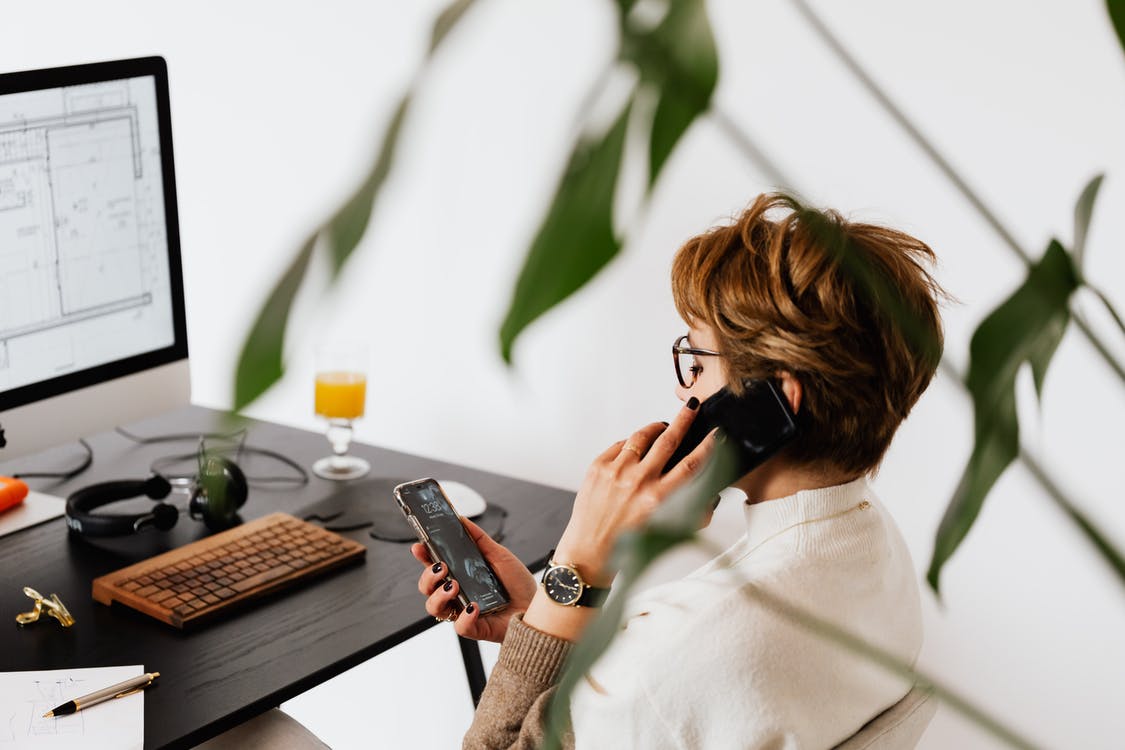

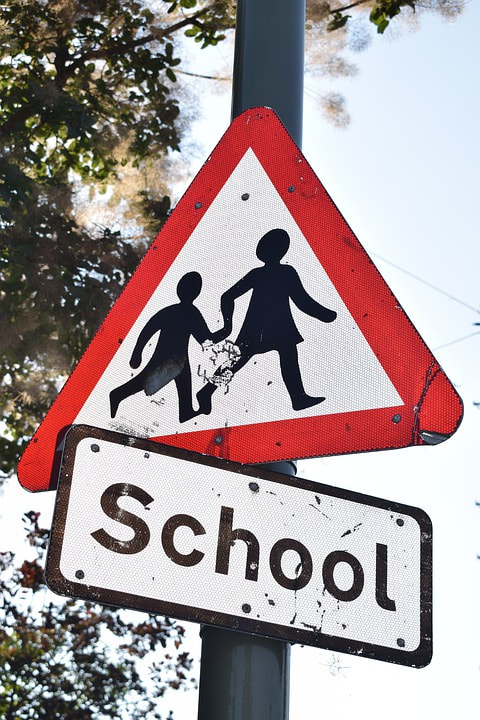
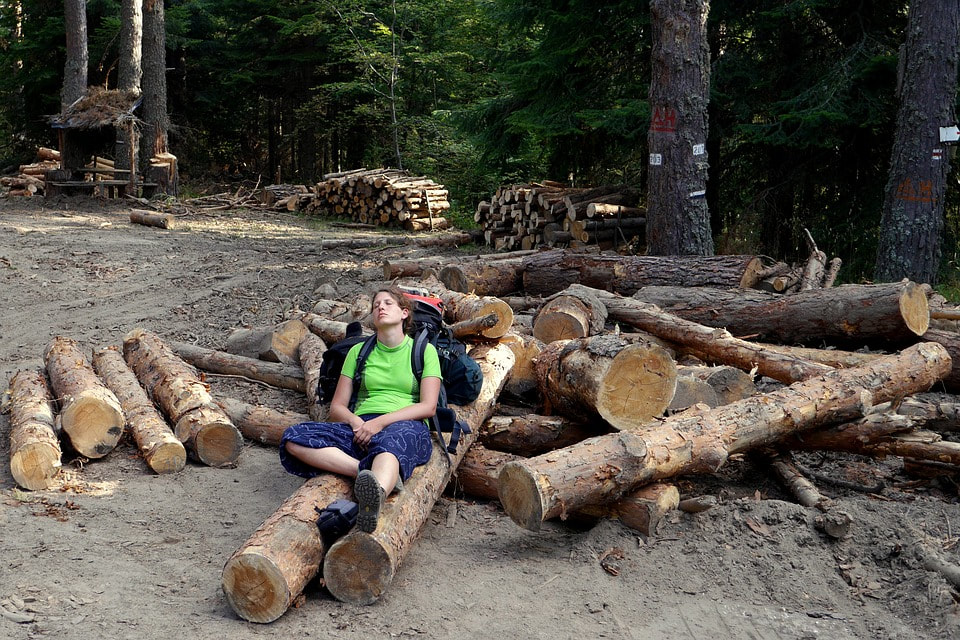
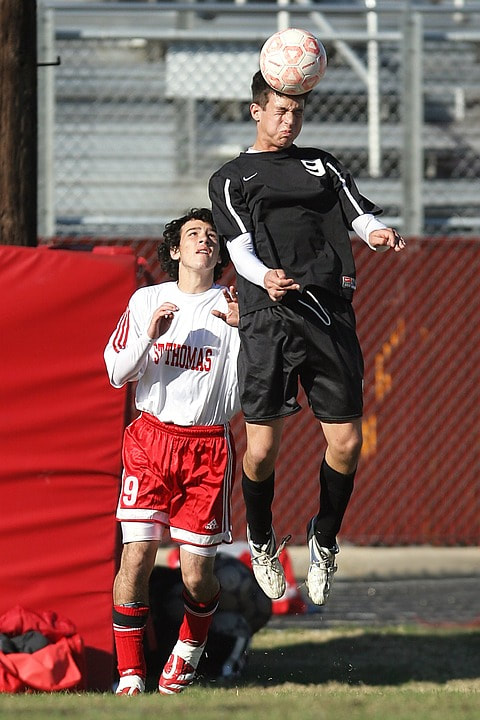


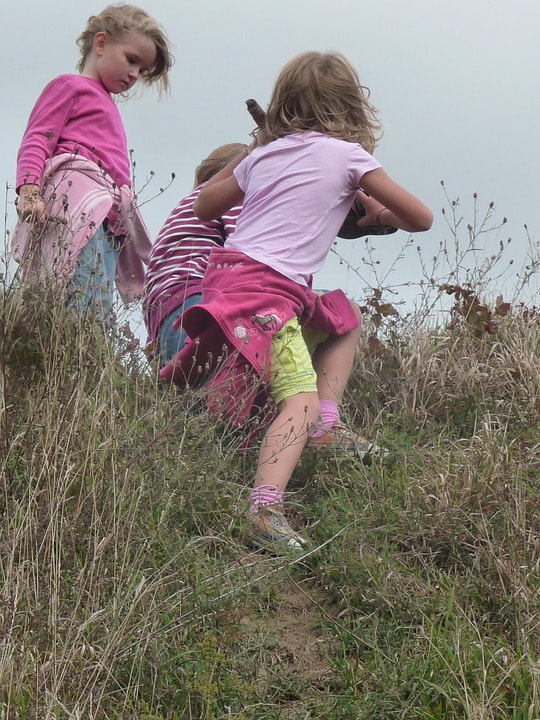

 RSS Feed
RSS Feed